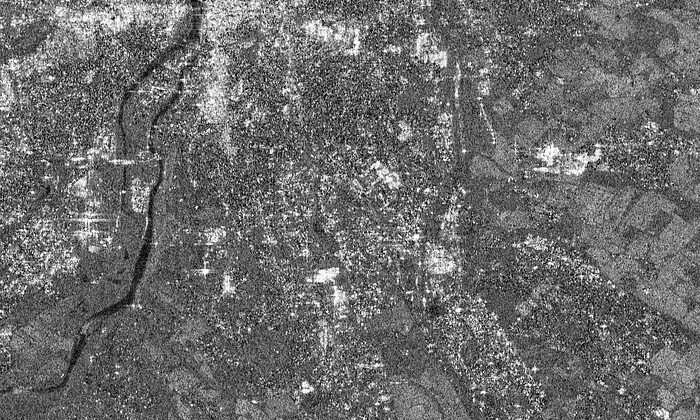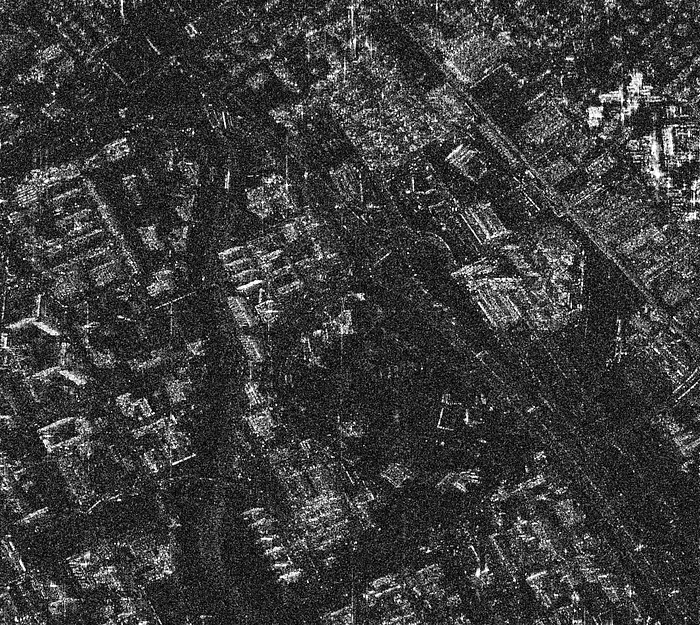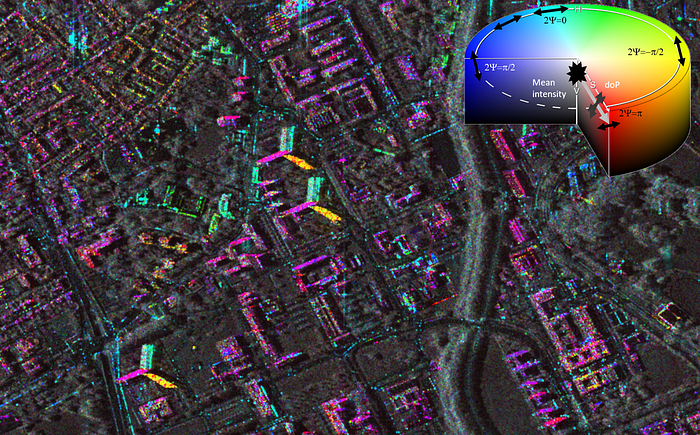Explore (VV, VH) or (HH, HV) SAR time series
Sentinel-1 time series are becoming more and more accessible. You may wonder what to do with the polarimetric information in the (VV,VH) or (HH,HV) stripmap modes.
The good news is that even if you don’t have all the information in the Sinclair matrix, you can still do quite a bit. The bad news (or not) is that this requires access to the relative phase data between VV and VH…in other words, the SLC data.
One can quite easily calculate a polarimetric parameter from this, called degree of polarization, which provides information close to the opposite of the classical polarimetric entropy.
But that will be, icing on the cake, much easier to calculate, by the formula:

Here is what this parameter looks like on a Sentinel-1 time series (Toulouse, France)

And on a series (HH,HV) Tandem-X, 2 m resolution :

We can use this parameter in colored polarimetric representations, for example to code saturation, while hue is coded by the orientation of the main polarization state:

All the calculations to reach this representation are described in the working document HERE
Don’t hesitate to contact me to improve it or contribute to it!
Bottom line:
● To fully exploit the polarimetry of a dual pol (HH,HV) or (VV,VH) time series, it is important to have access to the relative phase between these two polarimetric channels
● This could be done by starting with the complex SLC data, or by recording, in addition to |Svv| and |Svh|, the modulus of the cross product in georeferencing (GRD products: |SvvSvh*| )
● This cross product can be used to easily calculate a parameter that quantifies how deterministic or random the signal in the series is from a polarimetric point of view
